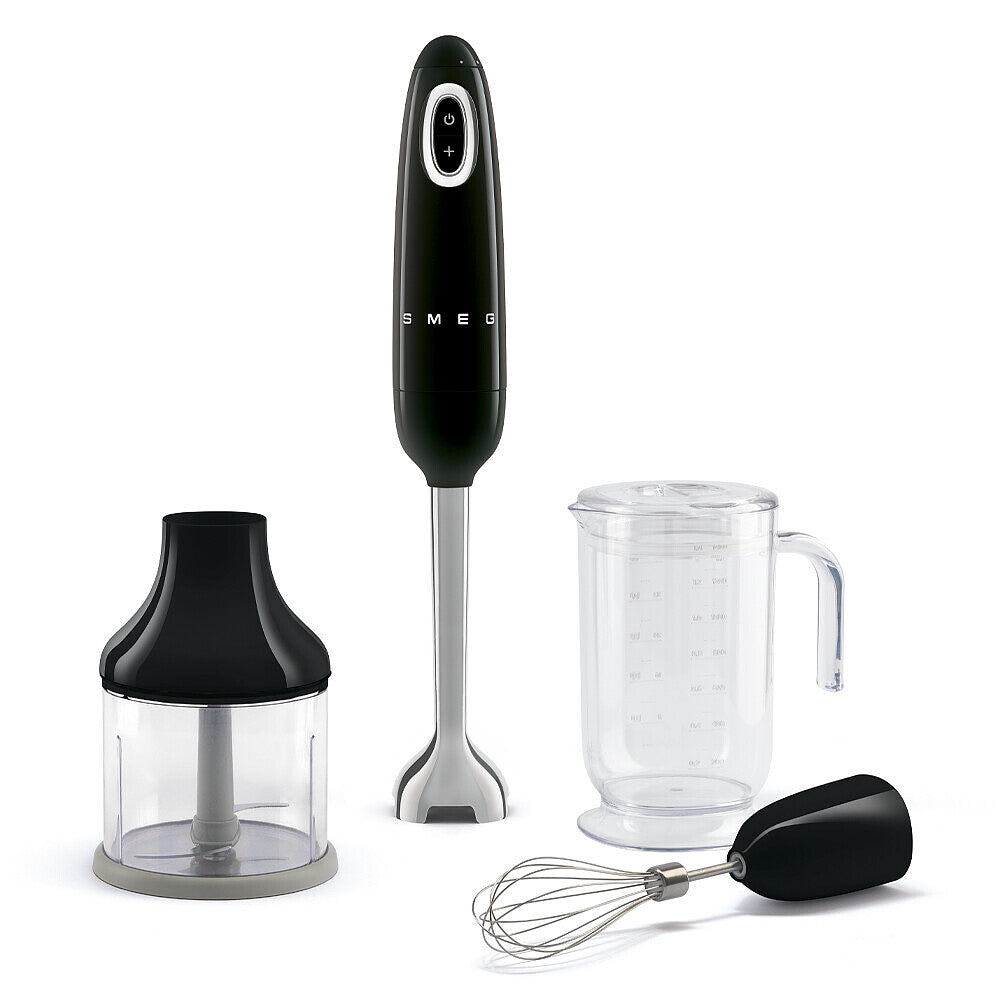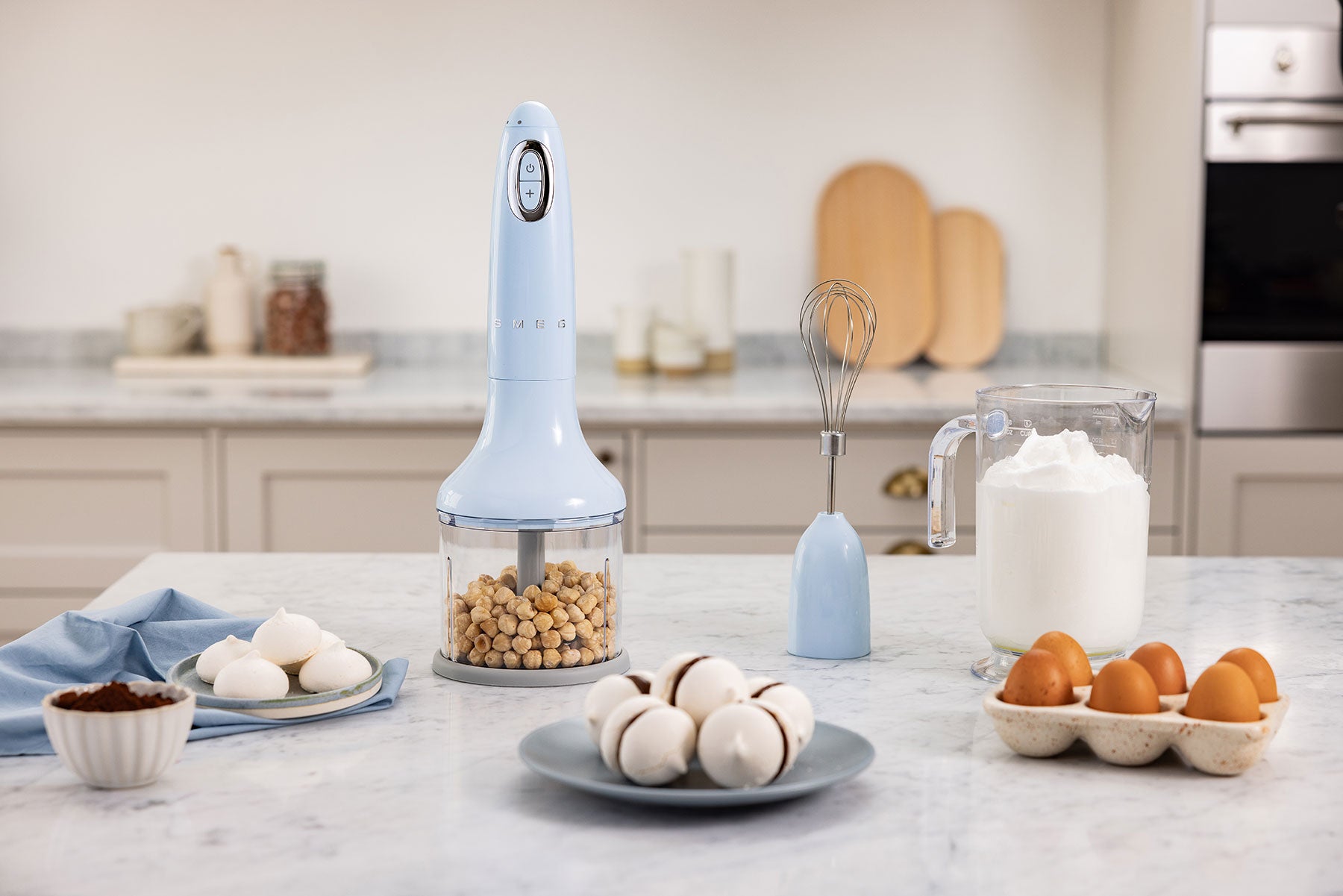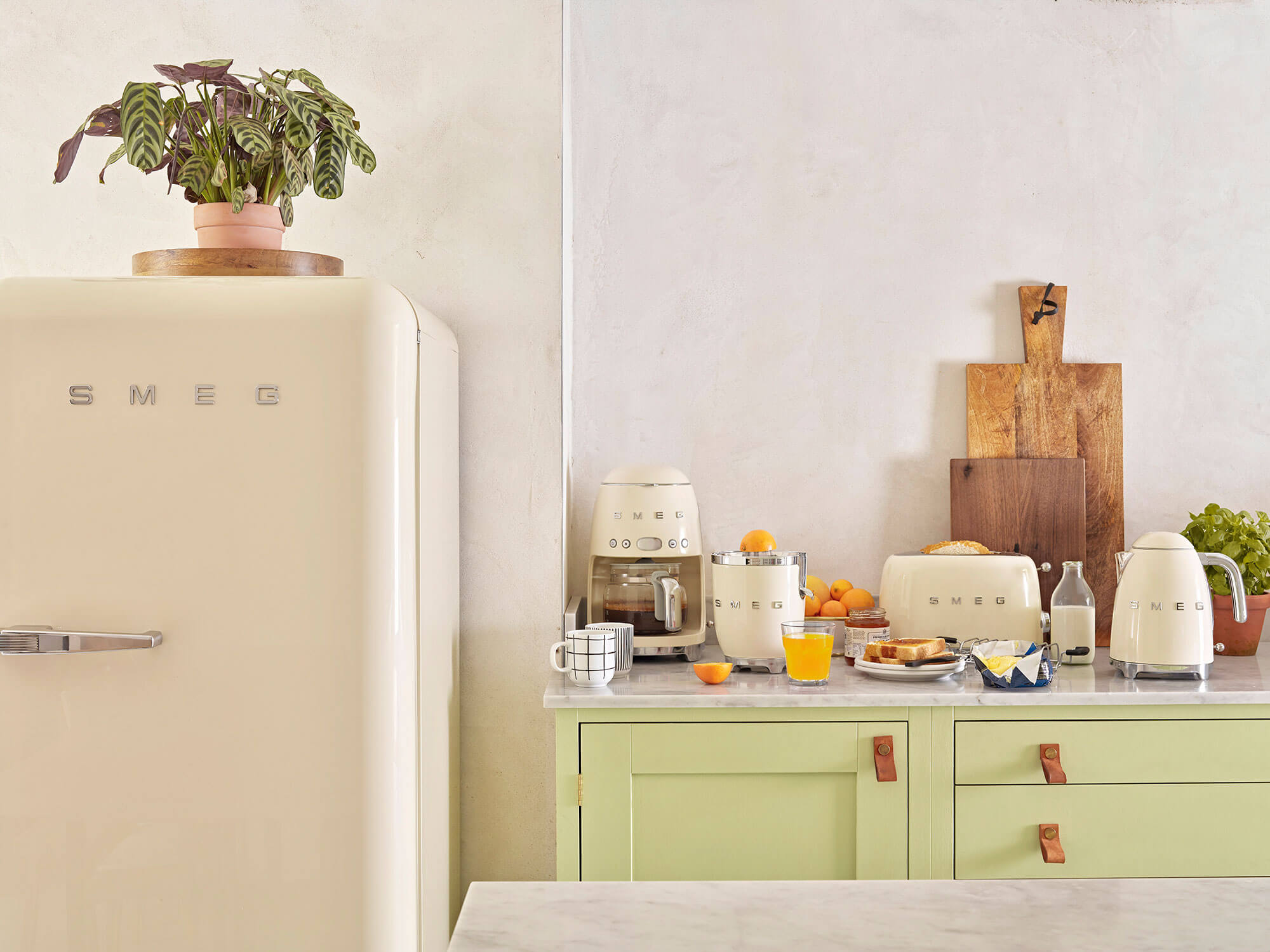HBF03BLUK50's Style
Hand Blender with Accessories in Black

Hand blender

Your Kitchen's New Power Tool
Product Information
Downloads
Controls
Aesthetics
Program / Functions
Technical Features
Electrical Connection
Logistic Information

Featured Collection
50s Style Retro Collection
Smeg’s 50s Style is iconic and instantly recognisable—bold curves, vibrant retro colours, and vintage flair meet modern technology in a collection that’s as expressive as it is functional. With a cult following around the world, these design-led appliances bring character and creativity to every space from kitchens to film sets.
If you have any questions, you are always welcome to contact us. We'll get back to you as soon as possible, within 24 hours on weekdays.
Shipping Information
Use this text to answer questions in as much detail as possible for your customers.
Customer Support
Use this text to answer questions in as much detail as possible for your customers.
FAQ’s
Use this text to answer questions in as much detail as possible for your customers.
Contact Us
Use this text to answer questions in as much detail as possible for your customers.